What sounded like a car alarm was actually a kea. What sounded like 30 minutes of a cell phone alarm was actually.... a cell phone alarm. Someone had set their phone outside on the railing and apparently left without it.
We had to actually check out of our room because we were being switched to a different one for tonight. So we packed up and got ready. This place was different than the usual backpackers. It was quiet at night and people got up early. Most of the parking lot was already empty by the time we checked out at 9:20 am.
It had rained very heavily all night, so we weren't sure what was going to happen with the boat ride. We decided to go down to the sound and make a decision from looking at it. There were definitely a lot of clouds, but it wasn't raining and there were even patches of blue.
The woman at the ticket counter was just as unpleasant as last night. This time, she got very short with us when the pricing wasn't clear in the brochure. It apparently cost extra to go to the underwater observatory but was being advertised as part of a "package". Fortunately another guy, who DID seem to enjoy his job (or at least faked it), came out and helped us. We ended up adding the observatory since it was "half price" today.
We wandered around the docks taking pictures until it was time to board.

Clouds still wrapped around the peaks...
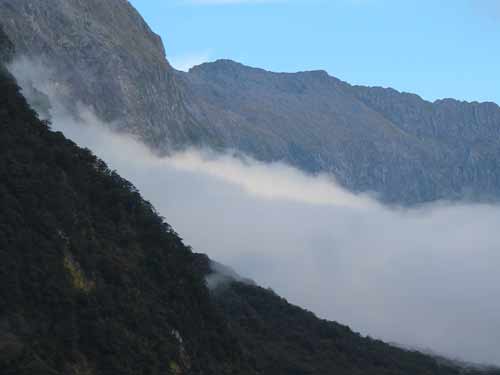
... and swirled in the valleys.
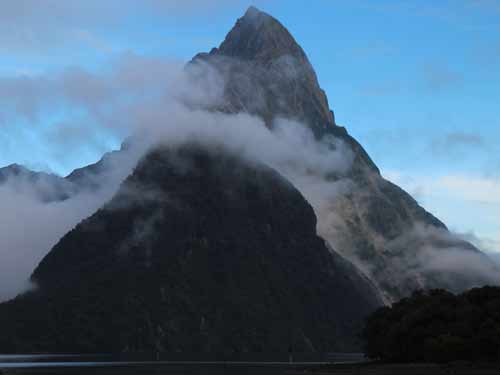
Mitre Peak
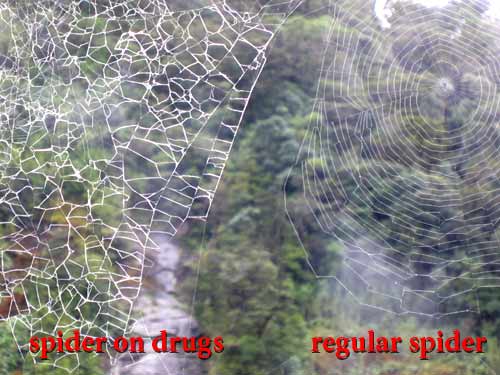
Don't let this happen to your spiders!
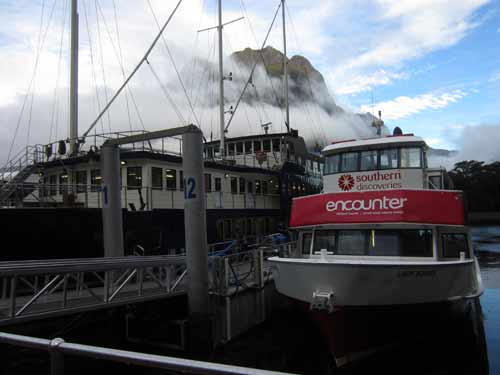
We were told this was a "small" group with only 75 people. We found that hard to believe until we saw our boat (on the right) next to one of the other boats.
The tour took us all the way to the mouth of the fiord and then back, with a stop at the underwater observatory for those who paid the extra bit. The weather held for most of the trip but started to sprinkle at the very end. So we considered ourselves fortunate. The announcer was live instead of a recorded tape, and she pointed out the various things we were seeing. The boat could get VERY close to the cliff walls!

Heading out into the sound
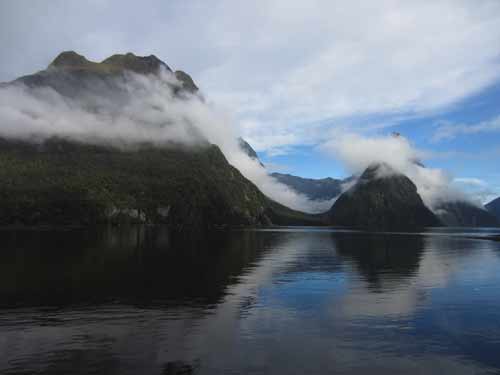
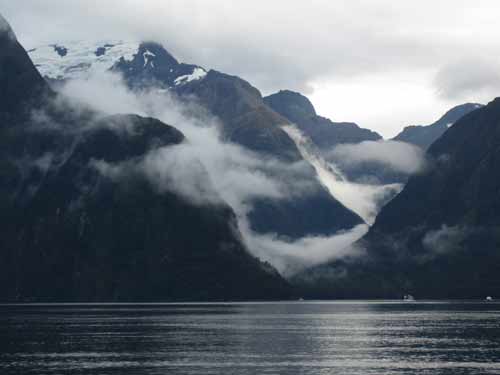
Clouds still clung to the mountainsides.
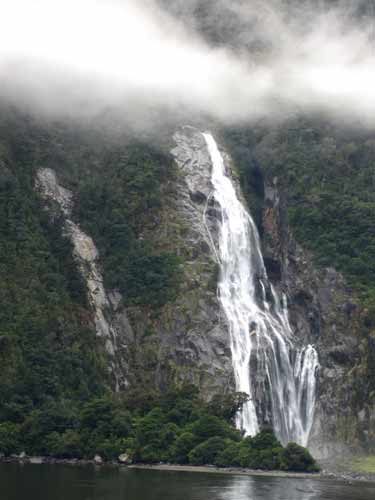
In spite of the heavy rains last night, you can still see how narrow the waterfall is compared to what it usually must be.
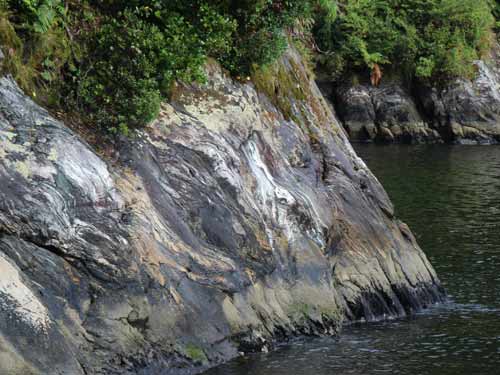
The cliffs are quite steep. It is only through the abundance of lichen that the plants and trees are able to get a root-hold.
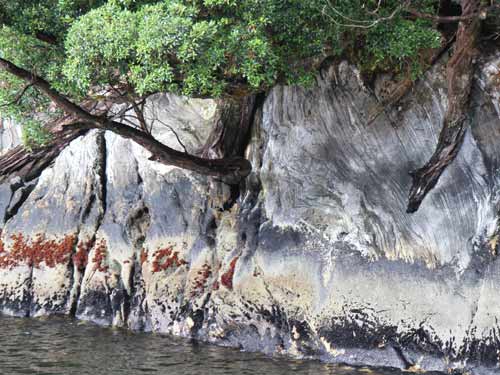
A precarious existence
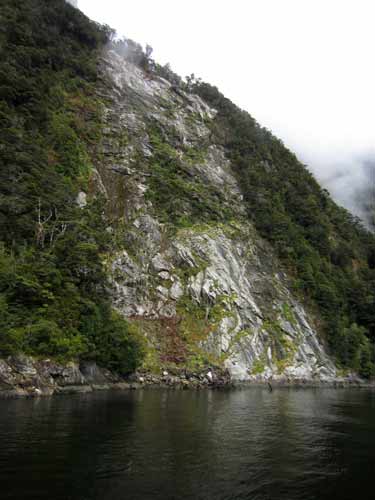
Sometimes the trees lose hold and there is an avalanche. It will take around 170 years for this spot to regrow to what it once was.
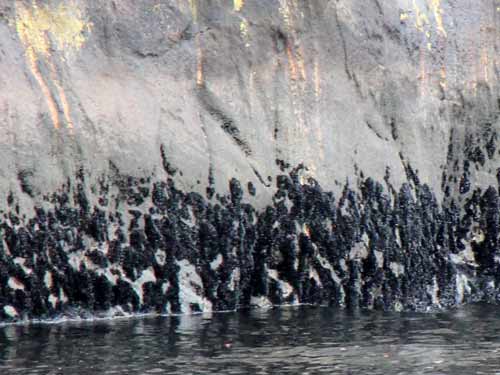
The black coating along the waterline are small mussels. Their growth is stunted by the layer of fresh water that sits on top of the sea water.
Suddenly a fur seal appeared in the water. Fur seals usually only feed at night, but this one had himself a large fish he was working on. He would swim up to the carcass, bite it firmly, then throw it out of the water as hard as he could, tearing off a piece of it in the process. He would then casually eat the piece then repeat the whole process again.

Throwing the fish....
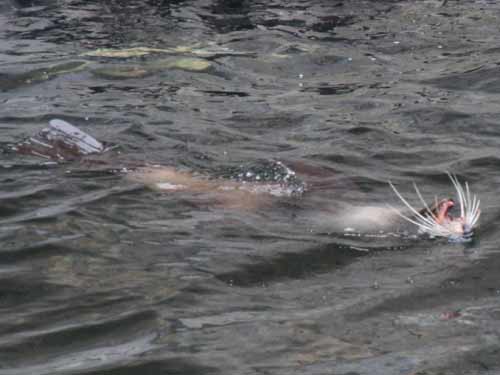
... peacefully eating...
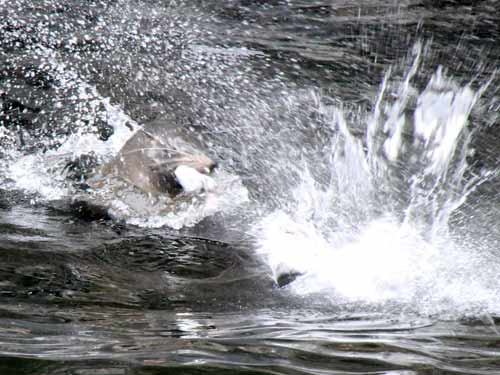
... another throw...
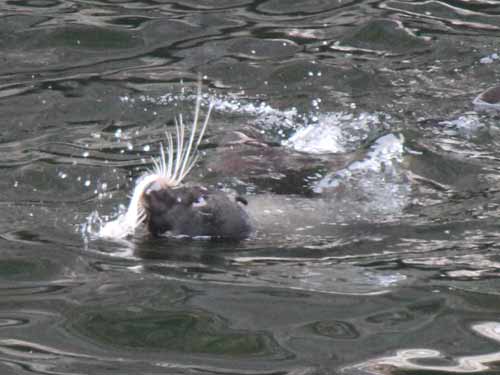
... another lounging feed...
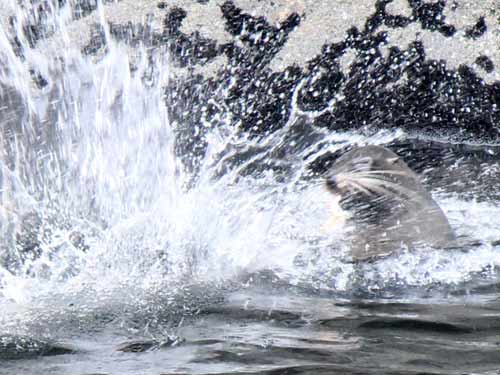
... throw again...
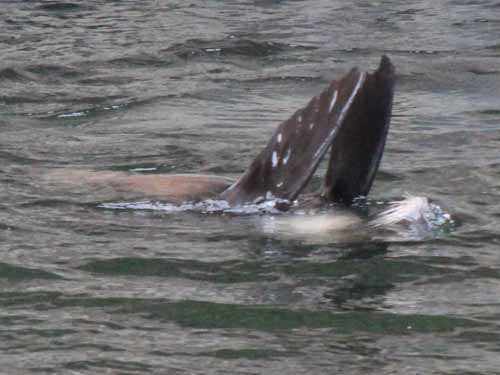
... blissfully eat some more.
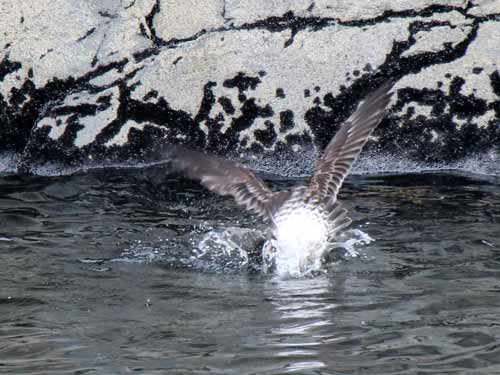
In the times that the fur seal was off eating, birds would swoop down on the fish and try to pull off a quick piece.
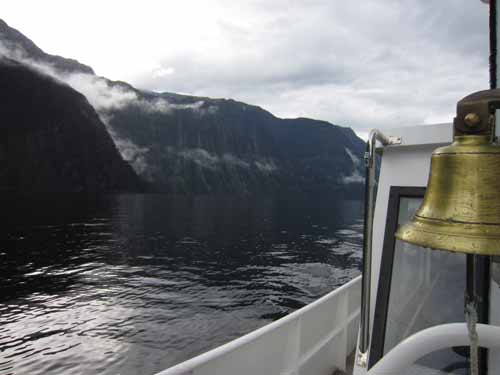
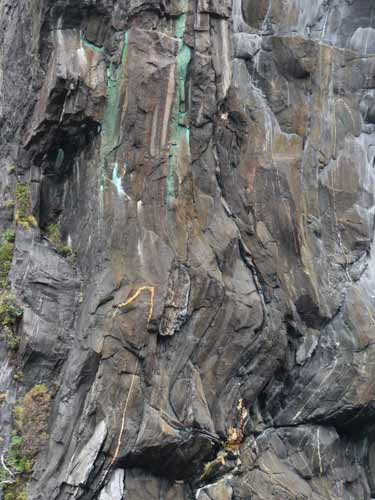
The green stripes are copper; the orange is quartz (which indicates gold, but the rock is too tough to make mining profitable).
We then rounded Copper Point. This is the narrowest, and hence windiest, part of the sound. As such, this is where the juvenile New Zealand Fur Seals (or kekeno in Maori) like to gather for naps, with the wind to help keep off the sand flies. These animals are kicked out of the group at a young age and expected to fend for themselves. When they grow up, they can then return and challenge the dominant bulls.
Unlike true seals, the fur seal has external ears and hind flippers that rotate forward.... which technically make them seal lions (eared seals). But since there is already a New Zealand Sea Lion, that' might make things even more confusing.
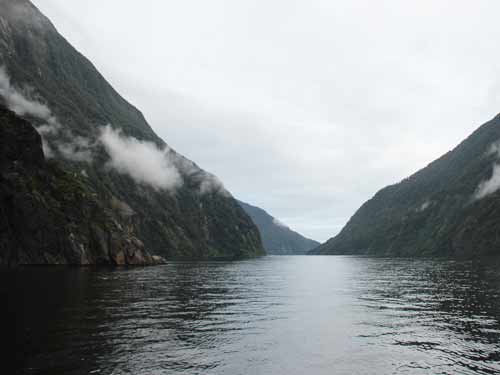
Copper Point
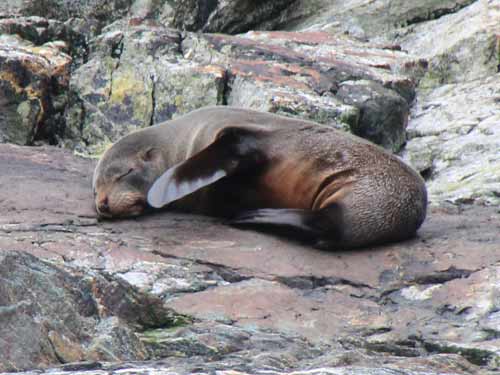
Even here, the sandflies were clearly a nuisance.

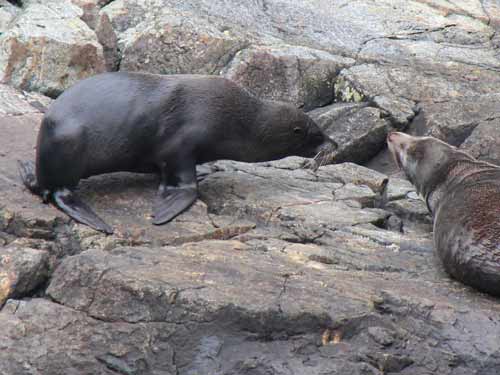
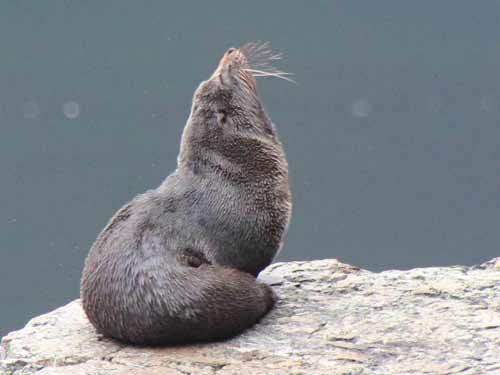

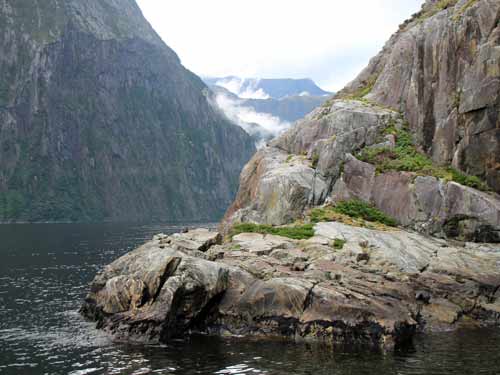
Leaving the point
At Fairy Falls, we got up close enough for people to touch the falling water. It can only go a few days without rain. Some falls will stop only 30 minutes after a good rain; two weeks is the longest others can go.
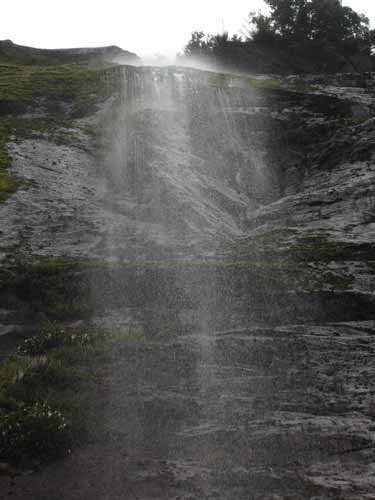
The delicate Fairy Falls
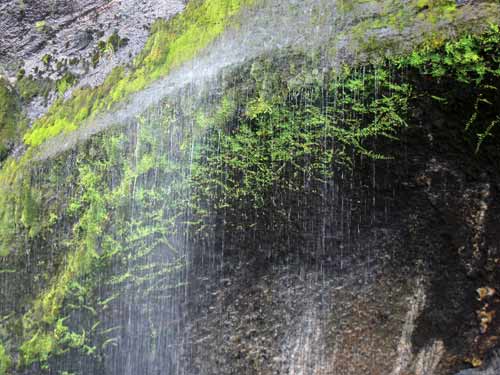

A father holds his young son up to touch the water.
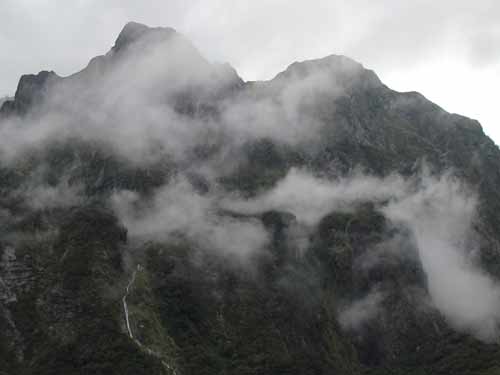
Last night's rain helped put more small falls along the cliffs.
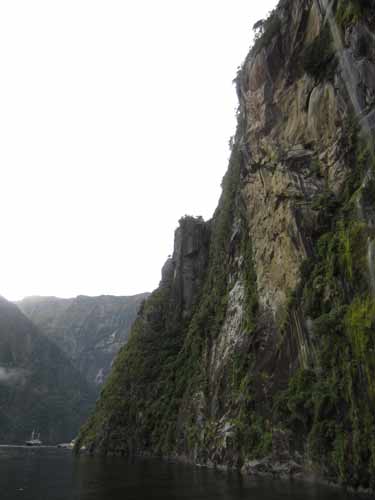
To get a better sense of scale, notice the boat in this and the following picture....
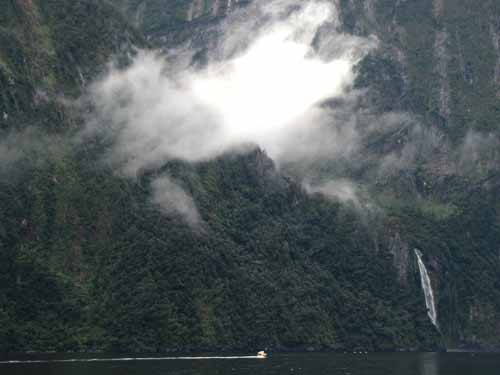
Looking back toward Sterling Falls
We approached the mouth of the sound what is also called the "terminal moraine." The shoreline was lined with giant boulders dropped here from the melting receding glaciers. It is only about 260 feet deep here (compared to 650 - 1,300 feet elsewhere in the sound). Similar areas in other fiords are so shallow that boats can't go in. This is probably what Captain Cook feared when he passed by hundreds of years ago.
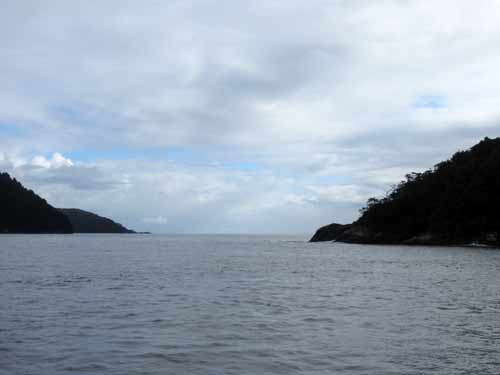
The mouth of the sound

Boulder deposits
We then entered the Tasman Sea. This is one of the roughest spots in the world. We were accosted by very large swells that lifted and then promptly dropped the boat quite heavily. We only stayed here briefly before turning around and heading back to the safety of the sound.
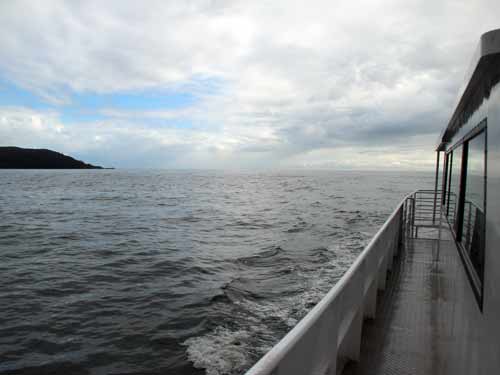
The Tasman Sea
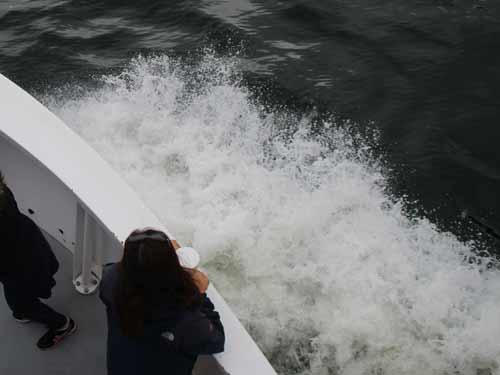
Large splashes as the boat was dropped followed each large ocean swell.
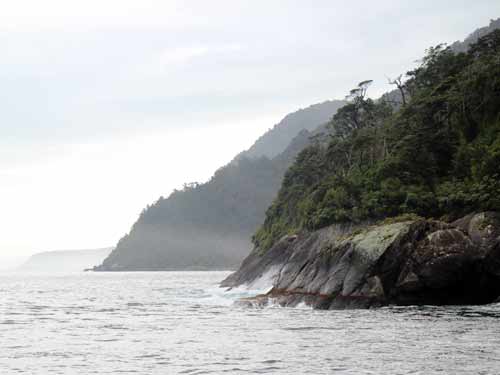
Looking down the misty coast past Dale Point
return • continue

